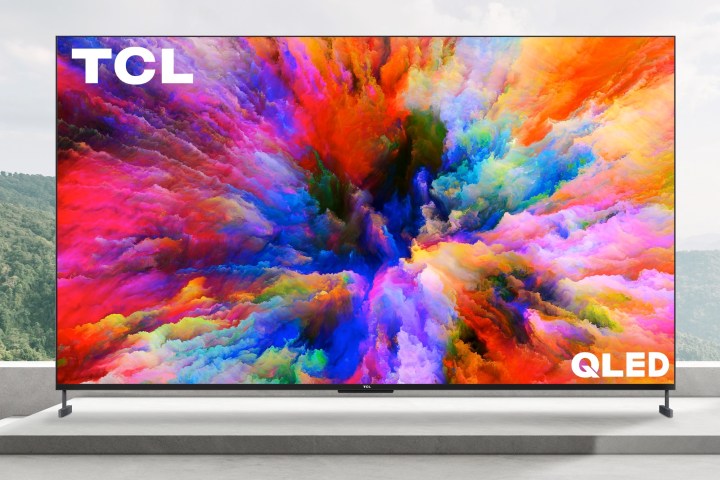How much should you expect to pay for a staggeringly huge 98-inch TV? If you’re Samsung, the answer is $15,000 for its 98-inch QN90A Neo QLED 4K. If you’re Sony, the answer is $20,000 — but hey, you’re actually getting two more diagonal inches because that’s how big its Bravia XR X92 is. On the other hand, if you’re TCL, the answer is “under $8,000” for its 98-inch XL Series 98R754, a massive 4K QLED Google TV that you can pre-order on Amazon today, for $7,732.

The 98R754 joins TCL’s existing XL Collection, a set of TVs that are all 80 inches or larger in size, including the company’s flagship 85-inch 8K QLED X925pro (X9), which uses TCL’s latest generation mini-LED backlight system, called OD Zero. Originally, TCL said that the X9 would be available for $10,000 before the end of 2021. But that clearly didn’t happen, and no new timeframe has been announced.

The X9 is a techno tour de force. It has Google TV, 8K resolution, hands-free voice commands, a built-in 160 watt Onkyo sound system with 5.1.2 Dolby Atmos support, Dolby Vision IQ, and a full suite of HDMI 2.1 features like auto low-latency mode (ALLM), variable refresh rate (VRR), and 4K @ 120Hz. Not to mention the design of the TV, which is absolutely gorgeous — and at 10 millmeters, it’s incredibly thin for a non-OLED TV.
The 98R754 isn’t quite as full-featured as the X9, but it’s got most of the checklist items folks are looking for, like a quantum dot LED display, Dolby Vision/HDR 10/HDR10+/HLG, Dolby Atmos, Google TV, hands-free access to the Google Assistant, four HDMI inputs (2 with support for 4K/120Hz input, and one with HDMI eARC). TCL says the 98R754 has a feature called Game Studio Pro, which means VRR and ALLM are also supported.
However, these two massive-size TVs aren’t the only things that TCL brought to CES 2022. The company is also making investments in motion technologies. The first is support for 144Hz refresh rates. This will be a ho-hum announcement for those who only use their TVs for movies and shows, but if you’re a gamer, I’ve probably got your full attention.
Gaming on big-screen TVs has become far better in the past few years thanks to the addition of ALLM, VRR, and support for 4K @ 120Hz. But dedicated gaming monitors have still enjoyed a slight edge over their larger cousins thanks to 144Hz. If your gaming hardware supports it — and many modern graphics cards do — 144Hz is a noticeable improvement in smoothness. TCL hasn’t indicated if it will support 144Hz at 4K resolution or if it will be limited to 1080p Full HD, but either way, gamers will want to watch out for the first reviews when they come in.
The second motion technology is TrueCut from Pixelworks, and both movie creators and their fans might benefit from it. TrueCut is a new, end-to-end system that filmmakers can use to control how frame-rate-based motion is displayed on TVs and other screens.
The details are a bit complex, but here’s an example: Dolby Vision is an end-to-end system that lets creators control all aspects of color, brightness, and contrast for their content. In theory, if a filmmaker produces a movie in Dolby Vision, and it gets streamed in Dolby Vision, and the streaming device and TV you’re using both support Dolby Vision, you’re getting exactly what the filmmaker intended. It does this, in part, by telling your TV exactly how the content should be displayed. It’s so rigorous, most TVs won’t let you make any picture adjustments at all when watching Dolby Vision content.
TrueCut works the same way, but it does for motion what Dolby Vision does for color, brightness, and contrast. The result should be the elimination of unwanted artifacts caused by overzealous motion-smoothing algorithms. Like Dolby Vision, it only works if TrueCut is supported by all the players, from studio to TV, which is why TCL’s announcement marks an important milestone for TrueCut — there’s now a TV maker that works with TrueCut.
What we don’t know yet is which studios will use it, or which streaming services. Hopefully, Digital Trends will get some hands-on time with TrueCut soon, and we’ll be able to give you a sense of how well it works.
Here’s a video from Pixelworks that — sort of — explains what’s going on:
Correction: An earlier version of this story indicated that the 98R754 was a Roku TV model. It is actually powered by Google TV.



